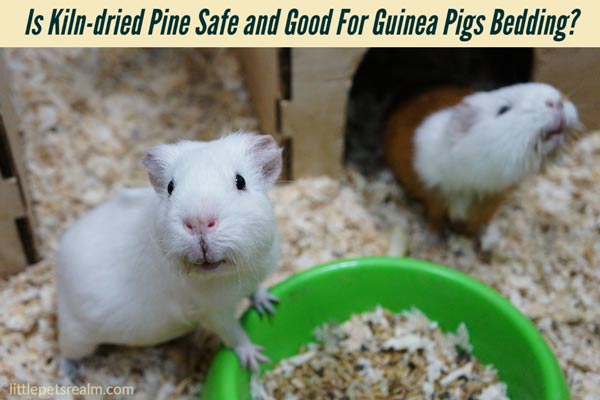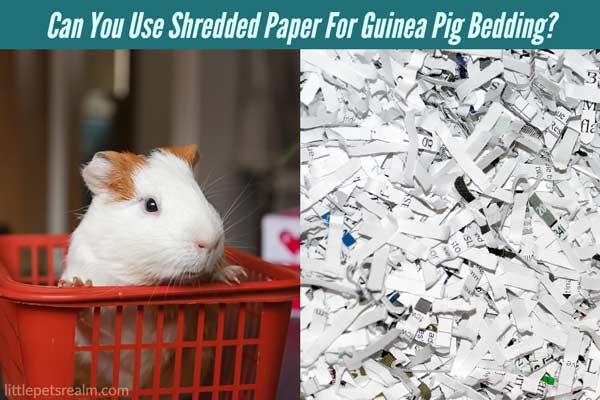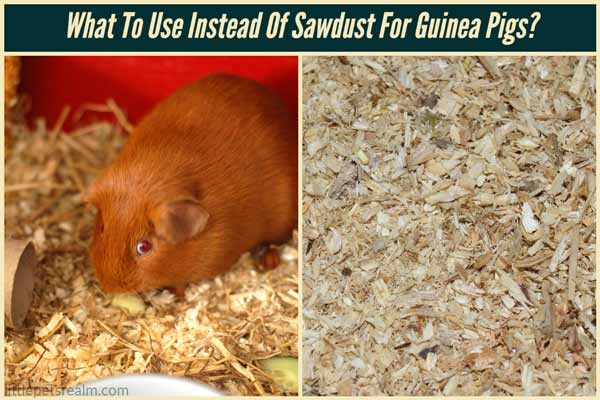If you’re like most guinea pig owners, you probably use fleece as your pet’s bedding. But, sometimes after only a day or two of use, you may find that your guinea pig’s fleece doesn’t wick or not absorb moisture.
But, why?
In this article, I will explain why your guinea pig’s fleece isn’t wicking, why you need to wick the fleece and how to wick it.
Table of Contents
What does it mean to wick guinea pig fleece?
Wicking guinea pig’s fleece means allowing water or liquid to go through fleece fabrics and absorb it into an absorbent layer underneath. This process helps the fleece become absorbent and keep it dry.
New fleece usually has a temporary barrier or waterproof layer. As a result, it isn’t able to pass the moisture through its fabrics. But, there are some techniques by which you can make the fleece wick.
However, the wicking process alters the structure of the fleece and it is irreversible.
If you want to know about the best fleece bedding for guinea pigs.
Why is wicking fleece necessary?
Wicking new fleece is necessary because it’s made of thin synthetic fibers that are closely woven together which make a protective barrier against liquid passing through it. You need to break the barrier down and enable the wicking property of the fleece.
When you buy a fleece, you will see that it may have a waterproof layer. But, unwashed or unwicked fleece with this layer isn’t going to help you in the long run as it’s not naturally absorbent and causes repelling of liquid. This forms a puddle of urine on the top of the surface.
Wicked fleece doesn’t cause this problem instead it passes through the fabrics. Therefore, it allows the fleece to dry quickly.
Moreover, it’s mandatory to keep your guinea pig bedding free from bad smells. A puddle of urine or liquid produces a foul smell and makes the cage unhygienic for your piggies. After wicking, you don’t have to face this problem.
Check out my other article about fleece bedding odor control.
Another problem with unwicked fleece is, that urine contains ammonia and this causes a respiratory problem when pools of urine are formed on the top.
Moreover, if your guinea pig stands in this urine and keeps its feet wet for a long time, it will cause bacterial infections such as urinary tract infections or bumblefoot.
To avoid these problems, it’s important to wick fleece for the guinea pig.
So, here are the key points of importance of wicking fleece.
- Allowing liquid or urine or pass through the protecting layer of fleece
- Remove water repellent layer of fleece
- Making fleece a good absorbent
- Keeping fleece dry
- Preventing the formation of the puddle of urine
- Keeping cage-free from bad smell
- Protecting guinea pigs from infections
Why isn’t guinea pig fleece wicking?
Normally new fleece doesn’t wick because of its property. But, an old fleece can also lose its wicking ability for many reasons. But, you may be unaware of this fact.
Let’s take a look at the causes of fleece not wicking:
Synthetic fibers and waterproof layer of new fleece
Most new fleeces have a protective waterproof barrier that prevents them from wicking. As I have mentioned before, thin synthetic fibers of the fleece are woven together closely.
Because of this reason, it can pass the liquid through the surface. However, this issue is temporary and you can solve it easily.
Using fabric softener
The fabric softener removes the wicking ability of the fleece. Many guinea pig owners use softener. Many washing powders or liquids contain softener and you may be using them without knowing about it.
A fabric softener makes the fleece softer by covering the fibers with a layer of lubricating agent and reducing the friction.
This sealing layer acts the same as the protective barrier of new fleece and resets the wicking ability.
Using the wrong detergent
You can’t use just any detergent to wash the fleece. Fleece loses its wicking property if you use detergent with a softener or other harmful chemical for it.
Drying with a tumble sheet
After washing a fleece, it’s very important to make them dry as soon as possible. But, if you are putting your fleece in the dryer with a tumble or dryer sheet, you are doing it wrong.
The reason for that is the fleece will end up having a waxy coat of tumble sheet same as a softener. This leads to a loss of the wicking capacity of the fleece.
Not drying quickly after wash
It’s necessary to dry the fleece within 30 mins after washing. If you keep them wet for more than that, they may lose it’s absorbing or wicking ability.
Not giving enough time to wash in hot water
Without washing the new fleece properly or not giving enough time to wash in hot water may not help you to enable its wicking ability.
Poor quality fleece
Another reason is your fleece may not be good as it pretends. Some may wick or absorb or stay dry, even if you do everything. So, it may be time for a change. Check the better product.
Too much expectation
Some owner is so frustrated because of the unrealistic expectation regarding wicking or absorbing capacity.
But, they should know that there is a limit to this wicking ability even if they do everything. They need to adapt the reality.
How do you get your guinea pig fleece to wick?
Wicking the fleece in a washing machine is actually quite simple, and all you need is some hot water, detergent, and white vinegar.
Here is the step by step guide:
Step 1. Load the fleece into the washing machine
First, you need to load the fleece into the washing machine. Make sure that you don’t overload the machine so that the fleece can move around freely.
However, make sure that the fleece you have is suitable for machine washing.
Step 2. Add detergent
Next, you need to add detergent to the machine. You can use any type of detergent, that doesn’t contain any fragrant or conditioner.
This will help to break down any oily or waxy residues on the fleece and allow your fleece to fully absorb the water. This is also safe for your piggies.
Step 3. Add white vinegar
You can add a small amount of vinegar to the machine. This is an optional step.
Place it in the fabrics softener compartment. You can use white vinegar as you can’t use fabric softener or dryer for wicking fleece.
So, white vinegar will work for disinfecting and eliminating the bad smell.
This will also help to prevent any buildup or residue on the fleece, which can prevent it from wicking.
Step 4. Wash the fleece
Once you have added all of your ingredients, simply run a hot water cycle in the washing machine. This will clean and sanitize your fleece, while also breaking down any waxy or oily residues on the fabric.
However, if you are using GuineaDad fleece or fleece that recommends cold water, wash the fleece on a cold water cycle to preserve the quality.
So, before washing, make sure which water you use for your fleece.
Step 5. Rinse properly
Once the cycle is finished, make sure to rinse the fleece thoroughly. This will remove any detergent residue from the fabric and make the wicking process effective. This prevents any irritation or discomfort for the guinea pig.
Step 6. Dry and repeat as necessary
After your fleece has been washed, you will need to dry it. Some people recommend drying the fleece on low heat, as this can help to make the fabric more absorbent. However, you can also air dry your fleece if you prefer to make the process fast.
Step 7. Repeat the process
Once your fleece is dry, you need to repeat the washing and drying process as necessary. This will help to ensure that your fleece is fully absorbent and will wick away any moisture or liquid quickly and effectively. You may need to repeat the method 2-3 times.
Step 8. Examine your fleece
Before using your fleece, it is important to test it and ensure that it is fully wicking. You can do this by simply pouring some water onto the fleece and seeing how quickly it is absorbed.
If your fleece is not wicking as quickly as you would like, simply repeat the washing and drying process until it meets your standards.
If you are still having trouble getting your fleece to wick, you may want to try switching to a different type of fabric.
Step 9. Wash and dry your fleece regularly
One of the best things you can do to keep your guinea pig fleece wicking is to wash and dry it regularly, at least once per week. This will help to prevent any buildup of dirt or excess moisture, which can impact the wicking ability of your fleece.
By following these simple steps, you can ensure that your guinea pig’s fleece wicks effectively and that your guinea pig stays clean, dry, and comfortable.
However, to ensure that the fleece wicks effectively, it’s important to use a high-quality, absorbent fleece liner.
This will help to keep the cage clean and dry, and will also prevent any urine or other liquids from coming into direct contact with your guinea pig’s skin.
Fleece wicking tips for guinea pig
Here are some tips for wicking your guinea pig’s fleece.
1. Use the right type of fleece to make sure it wicks and absorbs moisture properly.
2. Make sure you use the right detergent that’s fragrance-free and doesn’t contain strong chemicals.
3. Don’t use too much detergent to ensure removing all detergent residue completely.
4. Don’t overload the washing machine to make the process effective.
5. Be sure about using hot water as some fleece manufacturers don’t recommend using cold water to maintain efficacy.
6. Be patient – it can take several washes for the fleece to achieve wicking capabilities.
7. Don’t use fabric softener and dryer sheet as they will undo the wicking property.
8. Avoid using bleach, which can irritate the guinea pig’s sensitive sense of smell and cause skin irritation.
9. Use distilled white vinegar in the fabric softener compartment of your washing machine to help eliminate smells.
10. Wash the fleece regularly to maintain the wicking property.
You can also check out my other article about guinea pig fleece bedding burrowing.
What should you use to wick a fleece blanket?
The best way to wick a fleece blanket is with regular laundry detergent with no fragrance and distilled white vinegar.
Whether you have a new or used blanket, wicking is absolutely essential for your guinea pigs. Laundry detergent helps with the cleaning process and breaking down deposits of scale, while white vinegar helps with disinfecting and descaling.
Avoid using fabric softeners or dryer sheets when wicking your fleece, as these can interfere with the absorbent properties of your fleece.
They make the fleece soft by encapsulating the fabrics which reset the wicking property. This is also not good for the guinea pig’s health.
For softening purposes, try using a small amount of white vinegar instead.
Moreover, if the detergent isn’t fragrance-free and contains harsh chemicals, it will cause respiratory and other health issues to the guinea pigs, even death.
You can also use bleach to wick the fleece. But, you have to take extra precautions for that because guinea pigs are sensitive to bleach. It can cause serious health problems if they come in contact with that.
So, if you use bleach, make sure you wash it again and rinse thoroughly to remove all residue completely again before putting it in the cage.
But, never use vinegar and bleach together because it will produce fume that is toxic and harmful to your piggies.
Can you wick fleece in cold water?
Many people suggest using hot water to wick the fleece because it opens up the fibers of the fabric and allows the detergent to penetrate deep inside. But, some fleece manufacturers don’t recommend using hot.
So, if you use a GuineaDad or certain types of fleece, it’s better to use cold water to wick the fleece effectively as well as ensure its longevity.
Conclusion
Wicking is an important process to make your guinea pig’s fleece absorbent and keep it dry. If you use don’t wick the fleece properly, it won’t absorb the moisture and keep the bedding wet and produce a foul smell. This will also cause health problems for your guinea pigs.
However, you can use a regular detergent that’s fragrance-free and not so strong to wash the fleece several times in the washing machine.
You also need to make sure you use the right fleece for your guinea pigs, as well as safe detergent for them.

I am Pallab Kishore, owner of Little Pets Realm. I share important tips, advice and answer all the queries to solve various problems about small pets such as guinea pigs and hamsters on this website.



